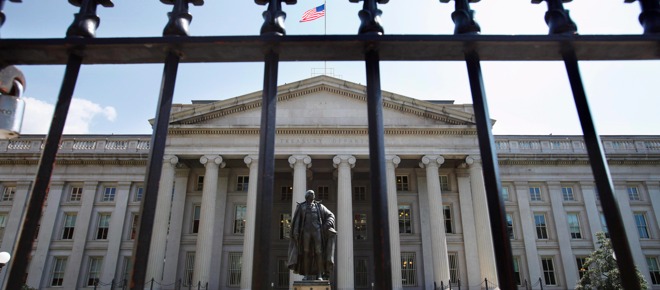What it takes to get back to AAA
Washington doesn’t have to look far for examples of how to climb back from a downgrade
Share
 By cutting the U.S. credit rating on Friday, Standard and Poor’s may well have pushed the world economy closer to a dreaded second dip into recession. Of course, downgrading the world’s largest economy is bound to have serious consequences, but Washington’s humiliation is not a first. Many of today’s AAA-rated countries have less-than-perfect credit histories. In fact, seven of the 15 nations on the AAA list of both S&P’s and Moody’s either lost their top score for a period, or had to work their way up there from lower ranks.
By cutting the U.S. credit rating on Friday, Standard and Poor’s may well have pushed the world economy closer to a dreaded second dip into recession. Of course, downgrading the world’s largest economy is bound to have serious consequences, but Washington’s humiliation is not a first. Many of today’s AAA-rated countries have less-than-perfect credit histories. In fact, seven of the 15 nations on the AAA list of both S&P’s and Moody’s either lost their top score for a period, or had to work their way up there from lower ranks.
So how does a country climb back to a AAA rating? In one of three ways, it seems–and not all of them involve austerity:
HARD WORK
CANADA
After twenty years of AAA, we lost our top mark in 1994. By 1995, Moody’s had downgraded Canada two notches, to Aa2. By 2002, though, we were back in triple-A territory. How did we do it? Lots of belt-tightening at the federal and provincial levels under Liberal PM Jean Chrétien and Finance Minister Paul Martin shrunk Ottawa’s debt from 98 per cent of GDP in 1995 to 75 per cent in 2002.
What Canada’s economy looked like in 2002:
Real GDP growth: 3.3 per cent
Debt-to-GDP ratio: 75 per cent
The government’s balance sheet: five consecutive years of surpluses
DENMARK
Moody’s ranked Denmark a notch below AAA in 1967. In the 1970s, its economy was in the doldrums, but starting in 1982 the country rolled up its sleeves and introduced ambitious labour reforms that brought unemployment down to 4 per cent, less than half the European average at the time, according to Moody’s. All sorts of new taxes also put Copenhagen’s fiscal house in order. Finally, in 1999 Denmark joined the AAA club.
What Denmark‘s economy looked like in 1999:
Real GDP growth: 1.6 per cent
Debt-to-GDP ratio: 52.3 per cent
The government’s balance sheet: surplus worth 2.9 per cent of GDP
NORWAY
In 1987, Norway slipped from AAA to Aa1 in Moody’s ratings before climbing its way up back to AAA ten years later, in 1997. By 1992 the country had switched into top gear, outperforming the EU average on all economic indicators. Norway kept it up for another five years, after which it was awarded the coveted AAA.
What Norway‘s economy looked like in 1997:
Real GDP growth: 3.5 per cent
The government’s balance sheet: surplus worth 7.3 per cent of GDP
SINGAPORE
From a credit-rating perspective, Singapore had relatively inglorious beginnings. In 1989, it had a mediocre Aa3 rating from Moody’s, but it steadily rose through the ranks over the years. The country managed to keep its export sector going through the 1997-1998 Asian financial crisis, maintaining an average current account surplus of 20 per cent for the five years preceding Moody’s upgrade to AAA in 2002.
What Singapore‘s economy looked like in 2002:
Real GDP growth: 2.2 per cent
Current-account balance, as a percentage of GDP: 23.3 per cent surplus
SWEDEN
Sweden lost its AAA-status in 1991, and needed about a decade to get it back. Hit by a deep recession in the 1990s, Sweden saw its public finances deteriorate sharply. By 1995 it had slipped to Aa3 on Moody’s record. Public debt ballooned from 42.9 per cent of GDP in 1990 to 77.9 in 1994. Then came austerity–and, eventually, economic growth in the late 1990s. By the end of 2000, the central government was running a surplus of 4.6 per cent of GDP, and public debt stood at 58.2 per cent. A year and a half later, Moody’s took note.
What Sweden‘s economy looked like in 2002:
Real GDP growth: 0.8 per cent
Debt-to-GDP ratio: 51.2 per cent
The government’s balance sheet: surplus worth 1.7 per cent of GDP
DUMB LUCK
AUSTRALIA
Australia lost Moody’s AAA rating in a 1986 downgrade, and had tumbled to Aa2 three years later. In 2002, though, without much doing of its own, its former AAA rating was restored after Moody’s reviewed its rating methodology and came to the conclusion that industrialized countries, such as Australia, weren’t likely to default on their debt. New Zealand and Iceland got the same treatment, though neither country currently has a AAA rating according to S&P. (New Zealand is a AAA country according to Moody’s).
FRIENDS IN HIGH PLACES
FINLAND
Finland lost its AAA rating in 1990, and was dropped down a notch further in 1992 to Aa2, according to Moody’s. In 1997, though, it climbed back to Aa1, and in 1998, it was once again boasting the top score. Finland worked hard to earn the first upgrade, opting to rein in public debt and privatize many leading companies to fight the recession that hit in the 1990s. The country also met the fiscal parameters set by the EU. The second upgrade—in 1998—came merely in anticipation of Finland joining the European Monetary Union in 1999, the arrangement that preceded the introduction of the euro in 2002. Being part of the euro-club seems to have automatically improved the country’s creditworthiness in the eyes of the rating agencies.